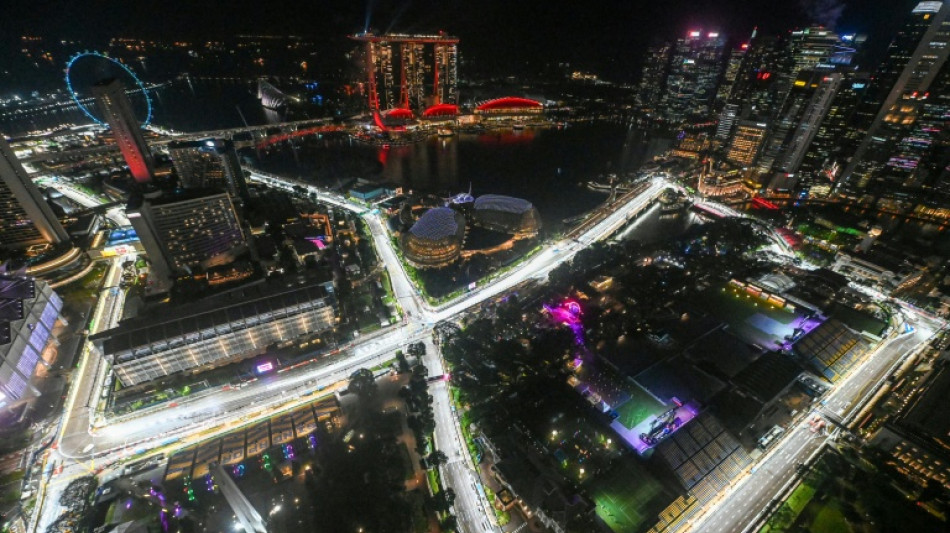
-
 Germany reviews warship order after delays
Germany reviews warship order after delays
-
Norris says Verstappen 'genuinely a challenger' as F1 title race hots up

-
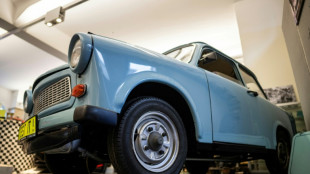 35 years later, beloved East German car still sputters on
35 years later, beloved East German car still sputters on
-
Japan's Arc hopes take a hit with poor draw, Minnie Hauk gets plum stall
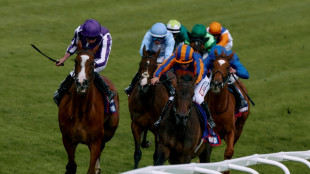
-
 Rescuers say no more signs of life in rubble of collapsed Indonesian school
Rescuers say no more signs of life in rubble of collapsed Indonesian school
-
Barcelona's Camp Nou return delayed again
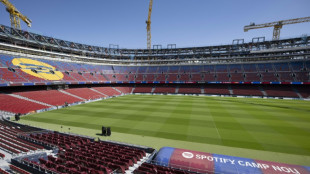
-
 Israel to deport Gaza flotilla activists
Israel to deport Gaza flotilla activists
-
Contepomi backs inexperienced Argentina playmakers against Springboks
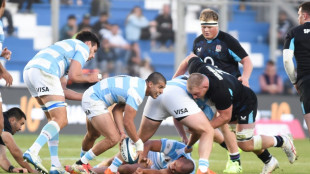
-
 Four wounded, suspect shot in Manchester synagogue attack
Four wounded, suspect shot in Manchester synagogue attack
-
Depardieu sues French broadcaster over report that sped up downfall

-
 Zelensky warns Europe Russia looking to 'escalate' war
Zelensky warns Europe Russia looking to 'escalate' war
-
Spain hosts record number of summer tourists

-
 OpenAI valuation soars to $500 bn in private share sale: reports
OpenAI valuation soars to $500 bn in private share sale: reports
-
Argentina scrum-half Cruz to start against Springboks
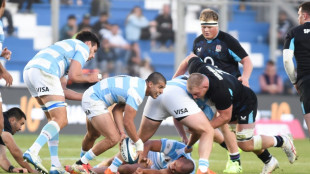
-
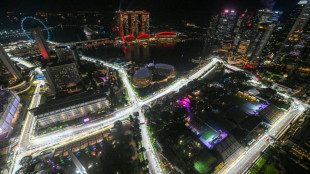 Formula One declares first official 'heat hazard' at Singapore GP
Formula One declares first official 'heat hazard' at Singapore GP
-
Germany recall Schlotterbeck but drop Fuellkrug for World Cup qualifiers

-
 Man City 'not good enough' for frustrated Haaland
Man City 'not good enough' for frustrated Haaland
-
Paris fans now watching fashion shows like sports games

-
 Gauff powers past unseeded Lys in straight sets for Beijing semis
Gauff powers past unseeded Lys in straight sets for Beijing semis
-
France prolongs detention of two from Russia 'shadow fleet' vessel

-
 Sinner primed for 'tough challenge' of defending Shanghai title
Sinner primed for 'tough challenge' of defending Shanghai title
-
Israel to deport intercepted Gaza flotilla activists

-
 Eddie Jones demands respect for Japan ahead of 'ambitious' tour
Eddie Jones demands respect for Japan ahead of 'ambitious' tour
-
Dutch warning over 'annoying' chatbots

-
 Markets surge on US rate hopes, tech fired by chip deal
Markets surge on US rate hopes, tech fired by chip deal
-
UK supermarket Tesco lifts profit outlook on competitive prices

-
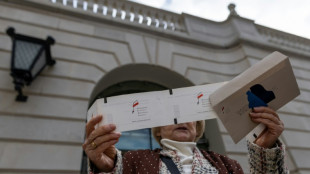 Young pianists vie for global glory in Poland's Chopin contest
Young pianists vie for global glory in Poland's Chopin contest
-
Robertson rallies All Blacks with Rugby Championship on the line

-
 Egyptian, Congolese contenders vie for UNESCO top job
Egyptian, Congolese contenders vie for UNESCO top job
-
Siraj on song as West Indies stumble to 90-5 in first India Test
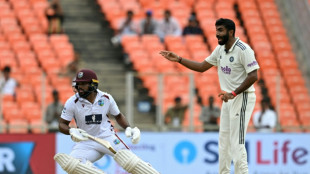
-
 No more signs of life in Indonesia school collapse: rescuers
No more signs of life in Indonesia school collapse: rescuers
-
'Defect or be jailed': Turkey opposition mayors face new threat

-
 Addicts swap drug dens for support centre in Abidjan
Addicts swap drug dens for support centre in Abidjan
-
Afropop icon Adekunle Gold embraces Nigerian roots with new album

-
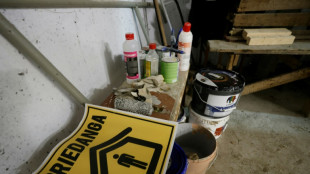 Lithuania builds shelters as drones prowl border skies
Lithuania builds shelters as drones prowl border skies
-
Wallabies bench O'Connor for All Blacks Test as Slipper set for farewell

-
 Zelensky at European summit as EU seeks to bolster backing
Zelensky at European summit as EU seeks to bolster backing
-
Over a dozen Australian suncreams pulled over safety concerns

-
 Dodgers down Reds to advance in MLB playoffs, Yankees stay alive
Dodgers down Reds to advance in MLB playoffs, Yankees stay alive
-
Skipper Scott Barrett returns as All Blacks change six for Wallabies Test

-
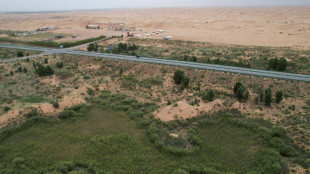 China's 'Great Green Wall' brings hope but also hardship
China's 'Great Green Wall' brings hope but also hardship
-
Let the 'Showgirl' era begin: Taylor Swift's new album is almost here

-
 Philippine quake death toll rises to 72
Philippine quake death toll rises to 72
-
Elon Musk halfway to becoming world's first trillionaire: report

-
 Surridge penalty lifts Nashville over Austin for US Open Cup
Surridge penalty lifts Nashville over Austin for US Open Cup
-
Trump jeopardising US role as scientific leader: Nobel officials
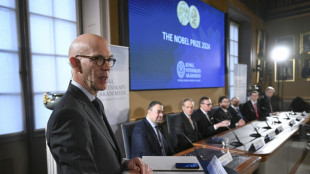
-
 Gaza aid flotilla presses on despite Israeli interception
Gaza aid flotilla presses on despite Israeli interception
-
Asian markets surge on US rate hopes, tech fired by chip deal

-
 Trump wants Nobel but 'forgotten' peacemakers more likely, experts say
Trump wants Nobel but 'forgotten' peacemakers more likely, experts say
-
Deepfake political scam ads surge on Meta platforms, watchdog says


Formula One declares first official 'heat hazard' at Singapore GP
This weekend's Singapore Grand Prix was on Thursday declared an official Formula One "Heat Hazard" -- the first time a new rule to help drivers stay cool has been invoked.
Race director Rui Marques issued a statement on Thursday afternoon notifying the teams of the regulation -- which means drivers will be able to wear cooling vests -- because ambient temperatures are expected to be 31 Celsius or higher.
"Having received a forecast from the official Weather Service predicting that the Heat Index will be greater than 31C at some time during the race... a Heat Hazard is declared," Marques said.
Singapore's bumpy Marina Bay Street Circuit is one of the most physically demanding F1 races, where extremes of heat, humidity and weather all play a part.
Drivers can shed up to three kilogrammes (more than six pounds) during the night race that often lasts the maximum two hours race limit.
The vests have coolant tubes connected to pumps and a heat exchanger, which some drivers in testing complained of making it very uncomfortable in an already cramped cockpit.
As a result, the governing body FIA said that wearing the vests will not be mandatory, but if drivers or teams opt out of using them their cars must still be fitted with the equipment to make the vests work.
Drivers not wearing the vests will have to carry an extra 0.5kg of ballast so they do not gain an advantage over those that do.
Every kilogramme of weight saved can equate to a tenth of a second off lap times, something that can be a big advantage.
The cooling vest system was developed after the 2023 Qatar Grand Prix, where several drivers needed medical attention after suffering in the heat.
George Russell trialled the cooling vest at this year's Bahrain Grand Prix and gave it the thumbs-up.
"Of course there's always room to improve," the Mercedes driver said. "I wanted to give it a whirl. So far, so good."
E.Gasser--VB
